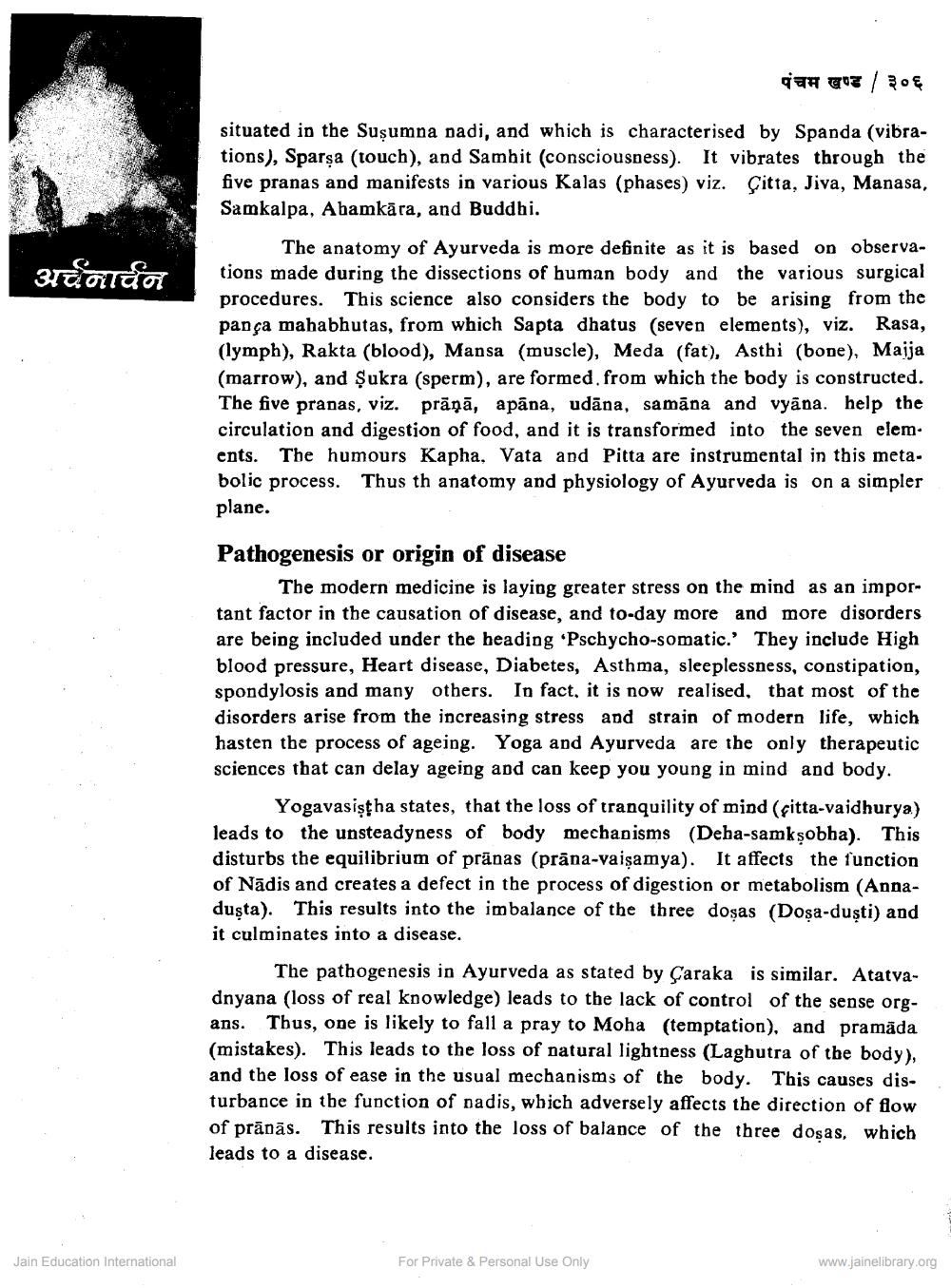________________
पंचम खण्ड/३०६
situated in the Suşumna Dadi, and which is characterised by Spanda (vibrations), Sparsa (touch), and Sambit (consciousness). It vibrates through the five pranas and manifests in various Kalas (phases) viz. Çitta, Jiva, Manasa, Samkalpa, Abamkāra, and Buddhi.
अनार्चन
The anatomy of Ayurveda is more definite as it is based on observations made during the dissections of human body and the various surgical procedures. This science also considers the body to be arising from the pança mahabhutas, from which Sapta dhatus (seven elements), viz. Rasa, (lymph), Rakta (blood), Mansa (muscle), Meda (fat), Asthi (bone), Maija (marrow), and Şukra (sperm), are formed, from which the body is constructed. The five pranas, viz. prāņā, apāna, udāna, samāna and vyāna. help the circulation and digestion of food, and it is transformed into the seven elem. ents. The humours Kapha, Vata and Pitta are instrumental in this meta. bolic process. Thus th anatomy and physiology of Ayurveda is on a simpler plane.
Pathogenesis or origin of disease
The modern medicine is laying greater stress on the mind as an important factor in the causation of disease, and to-day more and more disorders are being included under the heading 'Pschycho-somatic.' They include High blood pressure, Heart disease, Diabetes, Asthma, sleeplessness, constipation, spondylosis and many others. In fact, it is now realised that most of the disorders arise from the increasing stress and strain of modern life, which hasten the process of ageing. Yoga and Ayurveda are the only therapeutic sciences that can delay ageing and can keep you young in mind and body.
Yogavasiştha states, that the loss of tranquility of mind (fitta-vaidhurya) leads to the unsteadyness of body mechanisms (Deha-samkşobha). This disturbs the equilibrium of prānas (prāna-vaisamya). It affects the function of Nādis and creates a defect in the process of digestion or metabolism (Annadusta). This results into the imbalance of the three dosas (Dosa-duşti) and it culminates into a disease.
The pathogenesis in Ayurveda as stated by Caraka is similar. Atatvadnyana (loss of real knowledge) leads to the lack of control of the sense organs. Thus, one is likely to fall a pray to Moha (temptation), and pramada (mistakes). This leads to the loss of natural lightness (Laghutra of the body), and the loss of ease in the usual mechanisms of the body. This causes disturbance in the function of nadis, which adversely affects the direction of flow of prānās. This results into the loss of balance of the three dosas, which leads to a disease.
Jain Education International
For Private & Personal Use Only
www.jainelibrary.org




